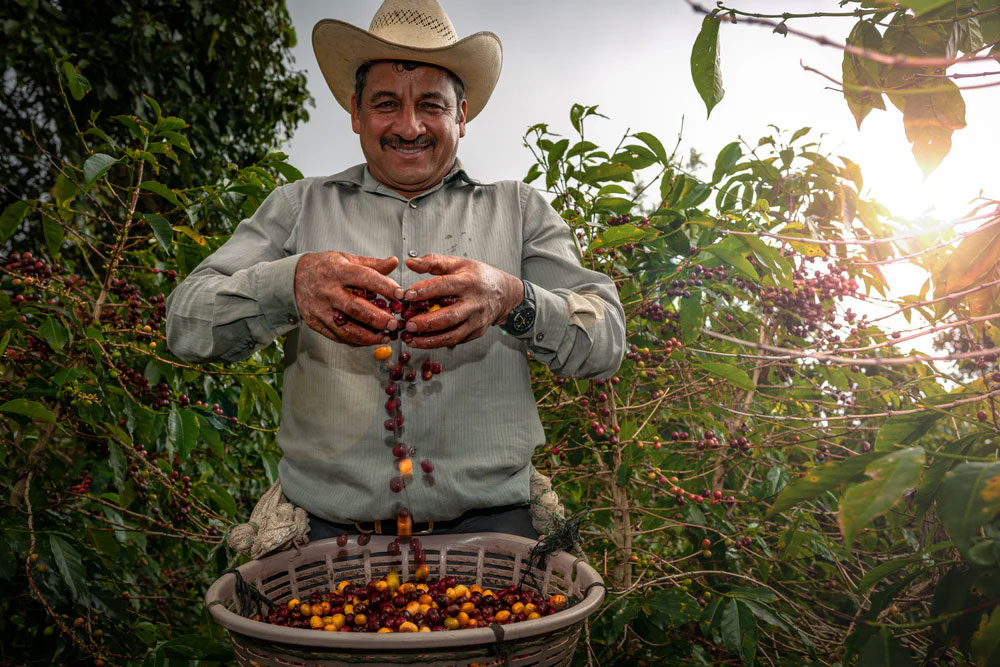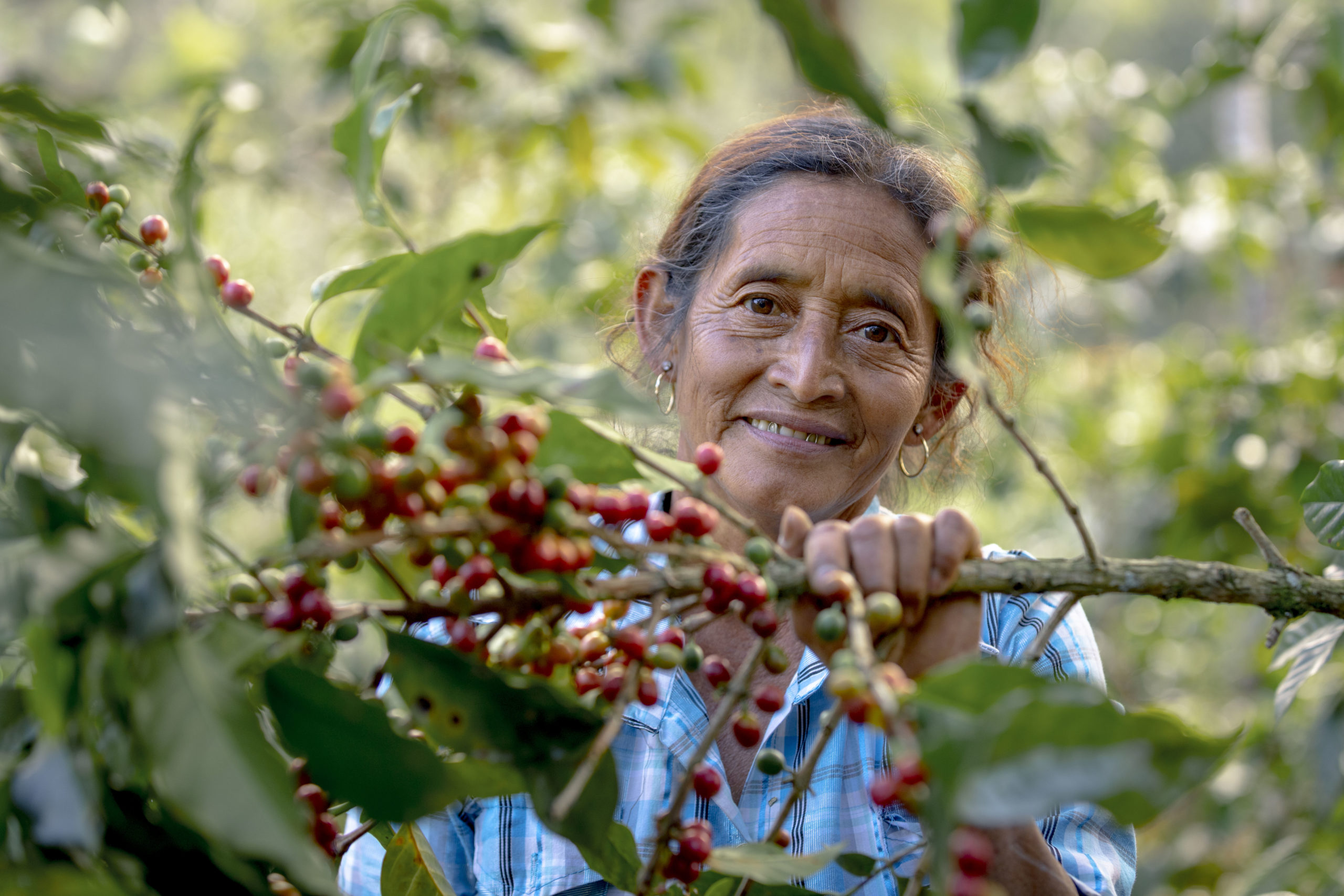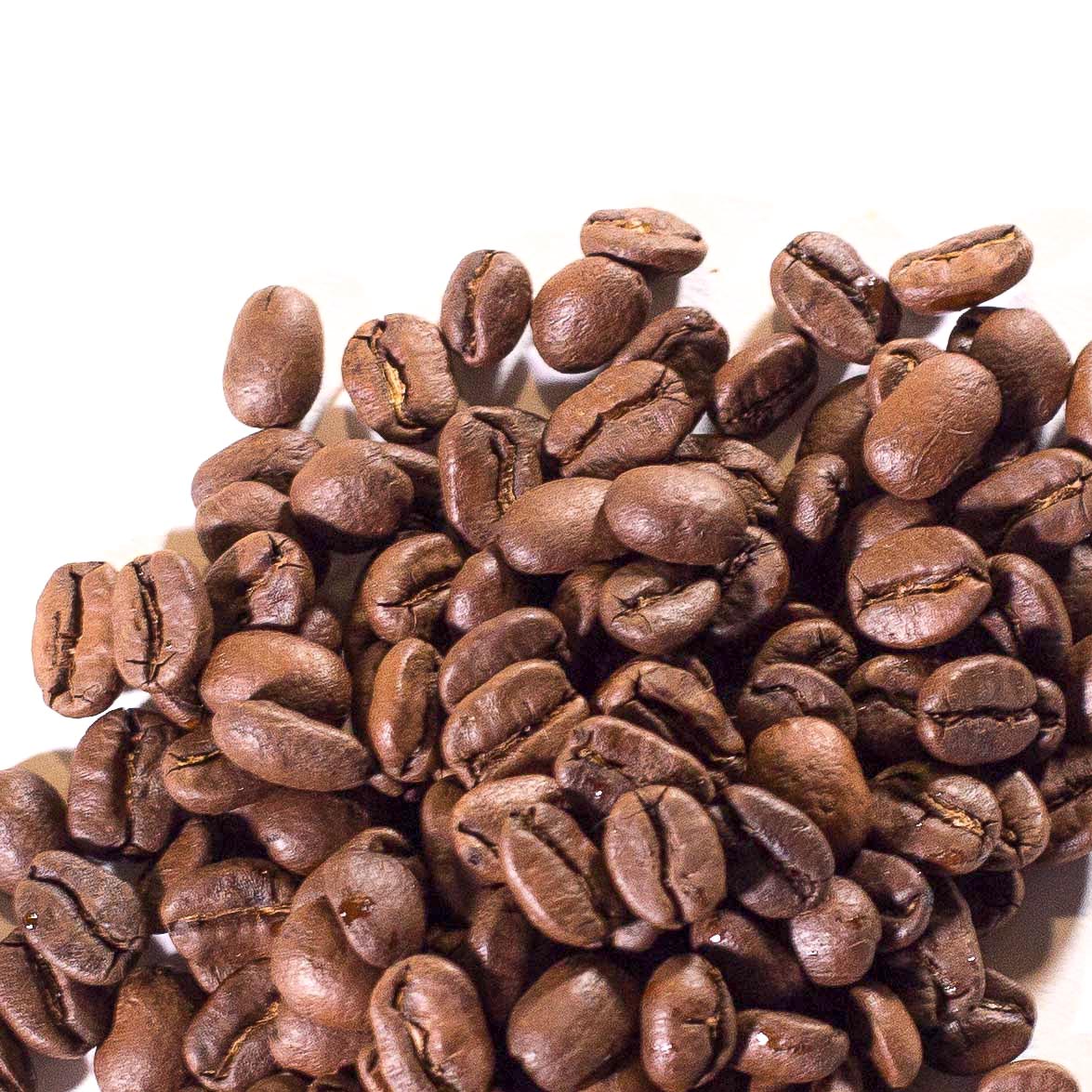Guatemalan coffee stands out in the world of beverages, captivating the taste buds of coffee lovers everywhere. With its rich history, unique growing conditions, and diverse varieties, this exceptional brew offers more than just a delightful sip. As we explore the astonishing flavors and sustainable practices behind its cultivation, you’ll discover why Guatemalan coffee has earned its esteemed reputation. Join us on this aromatic journey that celebrates the artistry of one of Central America’s finest exports.
Introduction to Guatemalan Coffee
Guatemalan coffee stands out as one of the finest coffees in the world, prized for its rich flavors and unique characteristics. Nestled between the Tropic of Cancer and the equator, Guatemala boasts ideal conditions for coffee cultivation, including rich volcanic soil, varied altitudes, and a diverse climate. These elements play a pivotal role in the exceptional quality of Guatemalan coffee.
Here’s why Guatemalan coffee is a delightful choice:
- Flavor Diversity: The country’s unique microclimates yield beans that offer a wide range of flavor profiles, from bright acidity to chocolatey undertones.
- Traditional Cultivation: Many coffee farmers practice traditional methods, hand-picking ripe cherries and using time-honored processing techniques, which further enhance the flavor.
- Sustainability Commitments: A growing number of farmers focus on sustainable practices, ensuring that both the environment and local communities thrive along with their coffee crops.
In summary, Guatemalan coffee isn’t just a beverage; it’s an experience carefully crafted by nature and nurtured by dedicated growers. Whether you’re a seasoned coffee enthusiast or just beginning your journey, exploring Guatemalan coffee offers a satisfying adventure into the world of premium coffee.
The Rich History of Coffee in Guatemala
Guatemalan coffee boasts a fascinating history that intertwines culture, agriculture, and trade. Coffee cultivation in Guatemala began in the 18th century, when the Spanish colonizers introduced coffee plants to the region. As the ideal mountainous terrain and rich volcanic soils became apparent, coffee transformed into more than just a crop; it turned into a pivotal part of Guatemala’s economy and identity.
Key historical points include:
- 1830s-1840s: The coffee boom began, driving economic growth and increasing exports.
- Late 19th Century: The introduction of railroads made transport easier, further boosting production and sales.
- Civil Wars: Coffee plantations faced upheaval during the Guatemalan Civil War (1960-1996), impacting labor practices and exports.
Today, Guatemalan coffee is celebrated not only for its flavor but also for its rich heritage. Farmers engage in traditional methods, honoring their roots while embracing sustainable practices. The country’s regions, such as Antigua and Huehuetenango, are renowned for their unique characteristics, contributing to the coffee’s distinguished reputation.
In summary, the rich history of Guatemalan coffee reflects the resilience and passion of its people. This captivating legacy enhances every sip, inviting coffee enthusiasts worldwide to appreciate its story as much as its flavor.
Unique Growing Conditions
Guatemalan coffee thrives in a stunning tapestry of vibrant landscapes and ideal conditions, setting it apart from other coffee regions. The unique environment plays a crucial role in cultivating its rich flavors and aromas. Here are some key factors contributing to the exceptional quality of Guatemalan coffee:
- Elevation: Most coffee farms in Guatemala sit between 1,200 to 2,000 meters above sea level. Higher altitudes result in cooler temperatures, allowing coffee cherries to ripen slowly, intensifying their flavors.
- Microclimates: The diverse geography creates various microclimates, offering distinct growing conditions. Whether near volcanoes or in shadowed valleys, these variations produce unique flavor profiles.
- Soil Composition: Rich volcanic soil enriches Guatemalan coffee with essential nutrients. This mineral-rich environment enhances the coffee’s body and vibrancy, making each sip a pleasurable experience.
- Weather Patterns: The rainy season provides ample water for coffee trees, while the dry months help control pests and diseases. This balance ensures healthy crops year after year.
- Shade-Grown Practices: Many Guatemalan coffee farms utilize shade-growing methods. This sustainable practice helps maintain biodiversity and contributes to the complex flavors found in Guatemalan coffee.
In summary, the exceptional growing conditions in Guatemala—elevation, microclimates, volcanic soil, weather patterns, and sustainable farming—come together to create a coffee experience like no other. Enjoying a cup of Guatemalan coffee is truly a testament to these unique natural factors.
Varieties of Guatemalan Coffee
Guatemalan coffee features a delightful range of varieties, each offering unique characteristics that appeal to diverse palates. The country’s rich volcanic soil and ideal climate foster excellent coffee growth, resulting in incredible flavor profiles.
Common Varieties
Here are some prominent varieties of Guatemalan coffee:
- Bourbon: Known for its sweetness and smooth texture, Bourbon beans deliver a well-balanced cup with notes of chocolate and caramel.
- Caturra: This variety is a mutation of Bourbon and provides bright acidity and a fruity aftertaste, making it a popular choice among coffee enthusiasts.
- Catuai: A hybrid of Mundo Novo and Caturra, Catuai is resistant to disease and offers a rich flavor with hints of citrus, perfect for those who enjoy a refreshing brew.
Flavor Comparison
| Variety | Flavor Notes | Acidity | Body |
|---|---|---|---|
| Bourbon | Chocolate, caramel | Medium to low | Medium to full |
| Caturra | Fruity, floral | Bright | Light to medium |
| Catuai | Citrus, sweet | Medium | Medium |
In summary, exploring the varieties of Guatemalan coffee opens up a world of flavor experiences. Each cup tells a story, offering an authentic taste of Guatemala that showcases the country’s commitment to quality coffee production. Whether you prefer the smoothness of Bourbon or the vibrant notes of Caturra, Guatemalan coffee promises a satisfying experience.

The Flavor Profile of Guatemalan Coffee
The flavor profile of Guatemalan coffee is truly exceptional, reflecting the unique soil, climate, and elevation of the region. This coffee offers a delightful combination of flavors and aromas that please even the most discerning palates. Here are the key characteristics that define it:
- Acidity: Guatemalan coffee typically exhibits a bright acidity, often described as vibrant and crisp. This liveliness contributes to its refreshing taste.
- Body: The body is medium to full, providing a satisfying mouthfeel without being overwhelmingly heavy.
- Flavor Notes: You can expect a complex flavor spectrum, including:
- Fruity undertones: Often hints of citrus or berry.
- Chocolate: Rich cocoa notes are frequently present.
- Spices: Subtle hints of spice add depth.
To illustrate, here’s a quick comparison of Guatemalan coffee with coffees from other countries:
| Coffee Origin | Acidity | Body | Flavor Notes |
|---|---|---|---|
| Guatemalan Coffee | Bright | Medium to Full | Fruity, Chocolate, Spices |
| Colombian Coffee | Medium | Medium | Caramel, Nutty, Chocolate |
| Ethiopian Coffee | Floral | Light | Berry, Citrus, Jasmine |
In conclusion, indulging in Guatemalan coffee not only satisfies your taste buds but also immerses you in a rich cultural experience—one that invites you to savor every sip!
Coffee Harvesting and Processing
Harvesting and processing of Guatemalan coffee are pivotal steps that greatly influence its quality and flavor. In Guatemala, coffee is usually harvested by hand, ensuring that only the ripest cherries make it to the processing stage.
Harvesting Methods
- Selective Picking: Farmers meticulously pick only the ripe cherries, which results in higher quality beans.
- Strip Picking: This method, although less common, involves stripping all cherries from a branch, regardless of ripeness.
Processing Techniques
Once harvested, the coffee cherries undergo processing, which can be broken down into two main methods:
- Washed Process:
- The cherries are pulped to remove the outer skin.
- Beans are fermented to eliminate mucilage, followed by washing with water.
- This method tends to accentuate the bright acidity and clean flavors of Guatemalan coffee.
- Natural Process:
- Cherries are dried in the sun with the fruit still attached.
- This technique imparts fruity and sweet notes, adding complexity to Guatemalan coffee.
Summary of Methods
| Processing Method | Flavor Profile | Characteristics |
|---|---|---|
| Washed Process | Bright, clean | Accentuates acidity |
| Natural Process | Fruity, sweet | Adds complexity and body |
Emphasizing sustainable practices, many farmers focus on quality over quantity, leading to a delightful cup of Guatemalan coffee that coffee lovers cherish worldwide.
Sustainability Practices in Coffee Farming
Sustainability is increasingly becoming a cornerstone of coffee farming, particularly in the Guatemalan coffee sector. Farmers are embracing eco-friendly methods that not only enhance the quality of their coffee but also protect the environment. Here are some notable sustainability practices:
- Shade-Grown Coffee: Guatemalan coffee thrives under shade, which helps preserve local ecosystems. By intercropping coffee trees with native shade providers, farmers maintain biodiversity and improve soil health.
- Organic Farming: Many Guatemalan coffee producers use organic methods to minimize the use of synthetic fertilizers and pesticides. This approach not only yields healthier beans but also contributes to the sustainability of the land.
- Water Conservation: As water scarcity becomes a global concern, Guatemalan coffee farmers are implementing techniques like drip irrigation. This practice ensures efficient water usage while preserving the quality of the coffee.
- Social Responsibility: Many local cooperatives are committed to fair trade practices, ensuring that coffee growers receive fair compensation. This initiative fosters community development and encourages sustainable farming techniques.
The collective impact of these practices is significant, positioning Guatemalan coffee as not only a premium product but also a responsible choice for consumers. By supporting sustainable coffee farming, you’ll enjoy the rich flavors of Guatemalan coffee while making a positive environmental impact.
Popular Guatemalan Coffee Brands
When it comes to exploring the rich world of Guatemalan coffee, several brands stand out for their quality and commitment to sustainable practices. Here are a few that you definitely should consider:
- Antigua Coffee: Renowned for its full-bodied flavor and chocolatey notes, Antigua Coffee hails from the Antigua region, known for its ideal growing conditions.
- Hacienda La Esmeralda: This brand is famous for its Geisha variety, loved for its floral and fruity notes. Their meticulous processing methods elevate the overall coffee experience.
- Café Capetino: With a focus on fair trade practices, Café Capetino offers a variety of blends that showcase the unique characteristics of Guatemalan coffee from different regions.
- Finca El Injerto: This award-winning estate produces some of the best coffee in Guatemala. Their beans are celebrated for flavor complexity and consistency, making them a favorite among coffee aficionados.
Comparison Table of Popular Brands
| Brand | Flavor Profile | Unique Feature |
|---|---|---|
| Antigua Coffee | Full-bodied, chocolatey | Grown in a UNESCO World Heritage Site |
| Hacienda La Esmeralda | Floral, fruity | Renowned Geisha variety |
| Café Capetino | Balanced, nutty | Fair trade practices |
| Finca El Injerto | Complex, consistent | Award-winning estate |
Enjoying Guatemalan coffee from these brands lets you savor the rich heritage and diverse flavors of this exceptional coffee-producing region!

How to Brew the Perfect Cup
Brewing the perfect cup of Guatemalan coffee involves attention to detail and a passion for coffee experience. Here’s how to indulge in the distinct flavors and aromas that define this exceptional coffee:
Steps to Brew
- Choose Your Beans: Select high-quality Guatemalan coffee beans. Look for varieties like Antigua or Huehuetenango, known for their unique profiles.
- Grind Wisely: Grind your beans just before brewing. A medium grind works well for most methods, ensuring you capture freshness and flavor.
- Measure Correctly: Use a coffee-to-water ratio of about 1:16. For instance, use 2 tablespoons of coffee for every 6 ounces of water.
- Water Temperature: Heat water to about 195°F to 205°F (about 90°C to 96°C). This temperature avoids bitterness and brings out the coffee’s natural sweetness.
- Brewing Method: Choose your preferred brewing method:
- Pour-over: This method allows more control over brewing time and water flow, highlighting the coffee’s nuances.
- French press: It can yield a fuller body, perfect for Guatemalan coffee’s rich flavors.
- Enjoying Your Coffee: Serve your Guatemalan coffee black or with a splash of cream, letting its complex flavors shine through.
Through these careful steps, you can enjoy the delightful experience of Guatemalan coffee, truly appreciating its unique characteristics. Happy brewing!
Pairing Guatemalan Coffee with Foods
Pairing Guatemalan coffee with the right foods can enhance your coffee experience, creating a delightful blend of flavors that excite your palate. Here are some delicious combinations that celebrate the rich taste and unique notes of Guatemalan coffee:
- Chocolate: The natural cocoa notes in Guatemalan coffee complement dark chocolate perfectly. A rich chocolate cake or a simple chocolate truffle will elevate the coffee experience.
- Nuts: Roasted almonds or cashews pair wonderfully with Guatemalan coffee’s nuttiness. Consider a nutty biscotti for a crunchy treat alongside your brew.
- Fruits: The fruity acidity of Guatemalan coffee harmonizes with fresh fruits like berries or citrus. A fruit tart or a simple bowl of mixed berries can refresh your palate.
- Cheese: Creamy cheeses like Brie or Gouda contrast nicely with the bold flavors of Guatemalan coffee, creating a beautifully balanced tasting experience.
- Pastries: Freshly baked croissants or cinnamon rolls provide a perfect sweet pairing, highlighting the coffee’s sweetness.
To summarize:
| Food Pairing | Flavor Profile |
|---|---|
| Dark Chocolate | Enhances cocoa notes |
| Roasted Nuts | Complements nuttiness |
| Fresh Fruits | Acidity balance |
| Creamy Cheese | Rich contrast |
| Sweet Pastries | Highlights sweetness |
Exploring these pairings will not only deepen your appreciation for Guatemalan coffee but also make each cup an adventure of flavors. Enjoy the journey!
Conclusion: The Joy of Guatemalan Coffee
In conclusion, the joy of Guatemalan coffee lies in its rich heritage, unique flavor profiles, and the dedication of its farmers. Every cup embodies the passion and hard work that go into producing some of the world’s finest coffee beans. Here are a few key takeaways that highlight why Guatemalan coffee deserves a special place in every coffee lover’s heart:
- Exceptional Quality: With the perfect combination of altitude, climate, and soil, Guatemalan coffee boasts high acidity and a rich body, making it an unparalleled experience for your taste buds.
- Cultural Significance: Each sip of Guatemalan coffee connects you to the vibrant culture and traditions of the region, enriching your coffee experience beyond just flavor.
- Varietal Diversity: From the mellow flavor of Antigua to the fruity notes of Huehuetenango, the variety in Guatemalan coffee ensures there is something for everyone.
Whether you savor it black, pair it with your favorite dessert, or brew it to perfection at home, Guatemalan coffee offers a delightful journey for the senses. So, embrace the joy of this remarkable brew—each cup is an invitation to explore and celebrate the beautiful landscape of Guatemala. Enjoy your coffee adventures!
Frequently Asked Questions
What makes Guatemalan coffee unique compared to other coffee origins?
Guatemalan coffee is renowned for its distinctive flavors and complexity, which are significantly influenced by the country’s unique geography and climate. Grown at high altitudes in volcanic soil, it benefits from a rich mineral content, contributing to its vibrant acidity and varying flavor notes. You can expect flavors ranging from chocolatey and fruity to floral, often with a creamy body, making it a favorite among coffee aficionados.
How is Guatemalan coffee typically processed?
Guatemalan coffee undergoes meticulous processing methods that enhance its quality. The beans are often washed, where they are soaked in water after being harvested to remove the fruit surrounding them. This method, combined with the ideal climate and altitude, helps to highlight the coffee’s natural brightness and rich flavors, setting it apart from naturally processed beans, which may have a more fruity profile.
What are the different regions in Guatemala known for coffee production?
Guatemala boasts several renowned coffee-growing regions, each offering unique flavor profiles. Notable areas include Antigua, famous for its rich and chocolatey notes; Huehuetenango, known for its bright acidity and distinct fruity flavors; and Cobán, which often produces coffee with a rich and bold character. Exploring these regions allows coffee lovers to experience the diverse offerings of Guatemalan coffee.
How can I brew Guatemalan coffee to enhance its flavor?
To truly enjoy the full spectrum of flavors in Guatemalan coffee, consider using a pour-over method, which helps to accentuate its acidity and complexity. Experiment with water temperature around 195°F to 205°F and a brew time of about 3 to 4 minutes, adjusting the grind size accordingly. This careful approach ensures you capture the delicate notes and rich body that Guatemalan coffee offers.
Is Guatemalan coffee a good choice for different brewing methods?
Absolutely! Guatemalan coffee is versatile and adapts well to various brewing techniques, including French press, espresso, and cold brew. Each method brings out different characteristics of the coffee. For instance, a French press will produce a bold and robust cup, while a pour-over may highlight its intricate flavors. This adaptability makes it a delightful choice for both coffee connoisseurs and casual drinkers.


